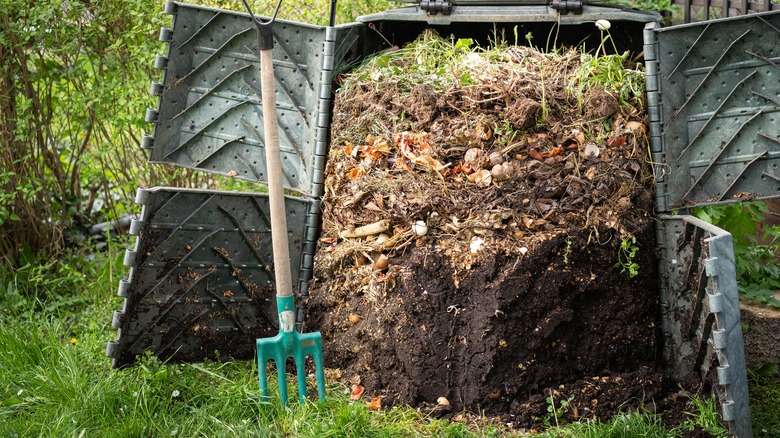People assume that tulip bulbs will easily grow beautiful flowers year after year. However, one of the many things you need to know about tulips before planting is that, depending upon the variety and your climate, only one bloom may be produced from each bulb. Further, while the flowers may grow back in subsequent years, they may be smaller or less stunning than they were the first year. While you could try to store and replant them the following fall, this can be a complicated process with no guarantee that they will bloom again. Composting your leftover bulbs is an easier and more foolproof method because spent tulip bulbs are valuable organic matter that will improve the quality of your garden’s soil. Flower farmer @microflowerfarm on TikTok shares that she chooses to compost instead of replanting because she doesn’t have the extra room to plant something she’s not sure will produce.
Composting as a whole is a responsible gardening practice with several benefits. Adding compost to your soil makes it healthier and stronger, cutting down the need for chemical substances in your garden. Because tulip bulbs are considered brown material, they will add more carbon to the soil. When you mix tulip bulbs into your DIY compost pile, they join with the other organic waste materials to release helpful nutrients as they break down.
How to compost tulip bulbs

The first thing you’ll need to do when composting your tulip bulbs is to remove them from the soil. You can either do this when picking your flowers in the spring for bouquets, or you can wait until the leaves begin yellowing in the summer. Use a garden fork to carefully lift both the flower stem and the attached bulb out of the soil. After cutting off the flower stems, shake the bulbs off and wipe them clean. Spread them out and air dry them for about a week or until they are fully dry. This ensures that they don’t have any excess moisture inside that could lead to rot or mold.
Next, add them to your DIY compost. When you do this, you’re essentially adding more carbon to the mixture, since tulip bulbs are brown materials. Because of this, in order to achieve a balanced fertilizer, make sure you add green materials that are high in nitrogen like coffee grounds or grass. If you have larger bulbs, you can break them into smaller pieces so the decomposition process goes by faster. Pour everything in evenly and mix them in. Keep the compost moist because that helps organic matter break down effectively, and make sure it drains well so that the bulbs don’t rot. Once your compost pile has decomposed properly, you can use it on your garden soil to produce a healthier crop.
